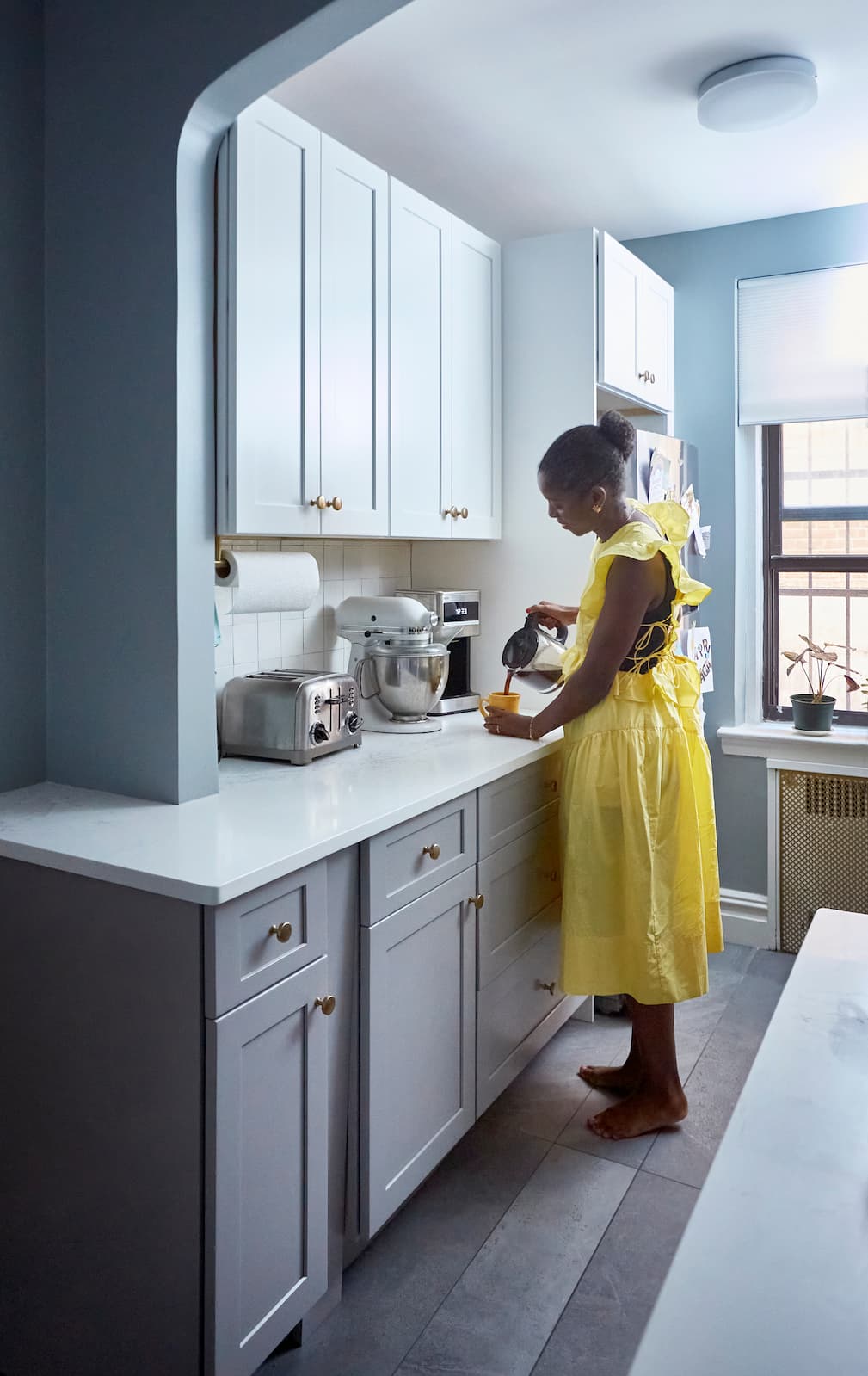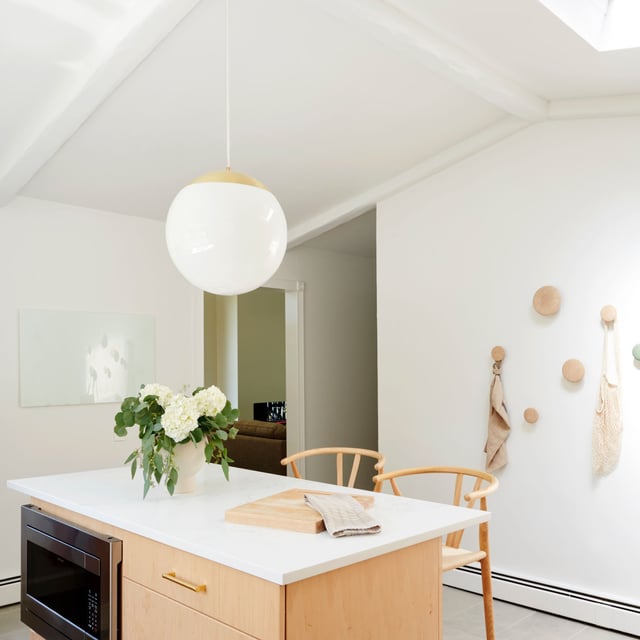
ceiling
Skylight Design and Costs for Adding or Replacing
11.22.2025

Finishing a basement is one of the most effective ways to add usable space and value to your home. But when it comes to basement ceiling options, homeowners often face unique challenges. A strategically chosen ceiling can make your basement feel brighter, taller, and more inviting—while also hiding ductwork, pipes, and wiring. Whether you’re dreaming of a cozy family room, a home gym, or a guest suite, the right ceiling option is a key step in your basement remodel.
Below, you’ll find a comprehensive guide to basement ceiling ideas, including the pros, cons, and cost considerations for each option. With the right approach, you can transform your basement into a comfortable, finished space that fits your needs and style.
Renovate with confidence every step of the way
Step 1: Personalize Your Renovation Plan
Step 2: Receive Quotes from Trusted Contractors
Step 3: Let Us Handle the Project Details

Why ceiling basements can be challenging
Basements present a set of design and construction challenges that are different from the rest of the house. Ceiling height is often limited, and you may need to work around exposed pipes, ductwork, or structural beams. Moisture and humidity can also be concerns, especially in older homes or regions with high water tables. In addition, basements are often used for utilities—like HVAC systems, plumbing, and electrical panels—which may require easy access for maintenance or repairs.
Lighting is another consideration. Many basements have limited natural light, so your ceiling choice can impact how bright and open the space feels. Finally, budget and intended use play a big role: a ceiling for a playroom or home theater may have different requirements than one for a laundry room or workshop. While we explore basement ceiling options in the sections below, you may also find related tips in How Much Does Finishing a Basement Cost and Waterproofing a Basement: Cost Breakdown and Next Steps.

Finishing or replacing a basement ceiling can cost anywhere from $1–$15 per square foot, reflecting the wide range of options available to homeowners. While the choice of materials—such as paint versus acoustic ceiling tiles—is a major factor, secondary needs like lighting updates, framing modifications, or HVAC adjustments can also affect the overall budget.
In many cases, basement ceiling work is part of a larger renovation that also includes walls, flooring, and lighting. When completed as part of a full remodel, the portion of the budget attributed specifically to the ceiling is often lower, since materials, labor, and overhead costs are distributed across the entire project.
Drywall is the most traditional basement ceiling finish, providing a smooth surface that blends seamlessly with the rest of the home. It’s a popular choice for spaces intended as living areas or bedrooms where a polished look matters.
Pros: Drywall creates a clean, cohesive appearance and can be painted in any color. It also offers good soundproofing when combined with insulation and fully conceals pipes, wiring, and ductwork. Despite its overall affordability, painted drywall enhances the resale value by giving the basement a more finished, home-like feel.
Cons: This basement ceiling option makes future access to utilities difficult, since repairs require cutting and patching. The installation is labor-intensive and can lower ceiling height, which may be an issue in basements with limited headroom.
Cost Considerations: $2–$4 per square foot installed.
Drop ceilings, also known as suspended ceilings, use a grid system with removable tiles. This option is especially popular in basements with lots of overhead utilities or where future access is important.
Pros: Drop ceilings make it easy to access plumbing, wiring, and ductwork, since tiles can be removed individually for repairs or upgrades. Modern tiles come in a wide variety of designs, and the system can help with sound absorption, making the basement quieter and more comfortable. Installation is typically faster and less messy than drywall, which can save on labor costs. Some tile options even offer moisture resistance and light-reflective finishes, particularly handy for compact basement bathrooms.
Cons: The grid system lowers the ceiling by several inches, which can make the space feel more cramped, especially in basements with already limited height. Some styles can look dated or commercial, and tiles may sag or discolor over time, requiring replacement.
Cost Considerations: $3–$7 per square foot.
An exposed ceiling highlights the structural joists and beams, a look that’s especially popular in modern and industrial-style basements. It creates a loft-like feel while maximizing ceiling height.
Pros: Exposing beams can enhance the basement’s height and openness while delivering a modern, industrial ceiling aesthetic. It provides easy access to pipes, wiring, and ductwork for maintenance. Joists and beams can be painted or stained to coordinate with the room’s design.
Cons: This ceiling option leaves utilities visible, which some homeowners may find too raw or unfinished. Exposed ceilings can also increase noise and reduce energy efficiency compared to finished options.

Cost Considerations: $1–$3 per square foot.
Wood planks or tongue-and-groove panels bring natural warmth and texture to a basement, making the space feel more like a finished living area. They’re a strong choice for rustic, cottage, or cozy design styles.
Pros: This style of ceiling adds lasting character and a rich, inviting atmosphere. Durable and customizable, the wood can be stained or painted to fit your aesthetic. Also helps conceal pipes and wiring for a clean, polished look.
Cons: Wood plank basement ceilings typically cost more than drywall or drop ceilings and may require extra framing or support. Because the boards cover utilities, future access for repairs can be more challenging.

Cost Considerations: $4–$8 per square foot.
Painting the exposed ceiling is a budget-friendly and creative way to finish a basement, especially if you want to maximize headroom. This approach works well for casual spaces, workshops, or playrooms.
Pros: Painting the exposed ceiling is a budget-friendly and quick solution that keeps the ceiling as high as possible, making the basement feel more open. It’s easy to update or touch up as needed, and you can choose any color to match your style, from crisp white to dramatic black.
Cons: Pipes, wires, and ductwork remain visible, which may not appeal to everyone and can make the space feel less finished. This option offers little soundproofing and may require more frequent cleaning or repainting to keep it looking fresh.

Cost Considerations: $1–$2 per square foot.
Acoustic ceiling tiles are built to absorb sound, making them well-suited for basements that double as media rooms, studios, or flexible living spaces. They’re usually installed in a grid system, similar to a traditional drop ceiling.
Pros: Strong sound absorption helps reduce noise transfer—ideal for theaters, music rooms, or multi-use areas. Damaged tiles can be swapped out individually, and a wide range of finishes and patterns gives plenty of design flexibility.
Cons: Lower-quality tiles can look dated or commercial, so style choice is important. Plus, installation lowers the basement ceiling height by several inches, and high-end tiles often cost more than standard drywall or paneling.
Cost Considerations: $4–$10 per square foot.
Beadboard and wainscoting bring warmth and architectural detail to a basement, making it feel less like a utility space and more like a finished room. They’re especially fitting for cottage, farmhouse, or traditional interiors.
Pros: This ceiling adornment adds texture and architectural interest, instantly making the space feel more inviting. It can be painted in any color for a customized look. Also useful for concealing imperfections in the ceiling above.
Cons: Beadboard and wainscoting ceilings are not ideal for spaces that need easy access to utilities, since repairs or upgrades can be more complicated. The installation may require additional framing and can cost more than drywall, particularly in larger basements.
Cost Considerations: $3–$6 per square foot.
A stretch ceiling uses a lightweight, flexible membrane stretched across a track system, creating a perfectly smooth and modern surface. This option is less common but offers a unique, high-end look to your basement.
Pros: A stretch ceiling creates a perfectly smooth, modern surface that can incorporate lighting, prints, or custom colors for a unique look. It’s moisture-resistant, easy to clean, and can be installed quickly by professionals.
Cons: This option is more expensive than most other ceiling types and requires professional installation, which can limit flexibility for future changes. Stretch ceilings are less common, so repairs or modifications may be more difficult and costly.
Cost Considerations: $6–$15 per square foot.
Choosing the right ceiling for your basement is about creating a space that’s comfortable, functional, and built to last. The right ceiling can help you maximize headroom, manage sound, and make future maintenance easier, all while setting the tone for your finished basement’s style. With so many basement ceiling options available, it’s important to weigh the pros, cons, and costs for your specific needs and vision.
Block Renovation pairs homeowners with highly skilled general contractors with experience renovating basements in houses like your own, whether you live in Philadelphia, Chicago, Boston, or one of the cities we serve. Whether you’re aiming for a polished family room, a creative studio, or a practical laundry space, our team can help you bring your vision to life with clear pricing, expert guidance, and a focus on your goals.
Start planning your remodel with Block Renovation and discover how the right ceiling can make all the difference in creating a space you’ll love for years to come.
Turn your renovation vision into reality
Get matched with trusted contractors and start your renovation today!
Find a Contractor
What are the best ceiling options for basement bathrooms?
For basement bathrooms, the best ceiling options are those that can withstand moisture and humidity while still offering a polished finish. Drop ceilings with moisture-resistant tiles are a practical choice because they provide easy access to plumbing and ventilation systems while keeping a clean look. Vinyl panels, PVC planks, or stretch ceilings also perform well in damp environments, as they’re non-porous and resist mold and mildew. If you prefer a seamless appearance, moisture-resistant drywall (green board) can be used, but proper ventilation is key to preventing condensation damage.
For more tips, read How to Build a Bathroom in a Basement .
What are the pros and cons of painting a basement ceiling?
Are any basement ceiling options considered more low maintenance than others?
How can I make my basement ceiling look higher?

Written by Block Renovation

Renovate confidently with Block
Easily compare quotes from top quality contractors, and get peace of mind with warranty & price protections.
Thousands of homeowners have renovated with Block

4.5 Stars (100+)

4.7 Stars (100+)

4.5 Stars (75+)

ceiling
Skylight Design and Costs for Adding or Replacing
11.22.2025

Bathroom
Slanted Roof Bathrooms and Shower Design Ideas
11.22.2025

ceiling
How to Raise Ceiling Height: Tips & Contractor Advice
11.22.2025

ceiling
Inspiring Kitchen Ceiling Ideas
09.18.2025

Cost
Ceiling Installation Costs: Repairs & Replacement Pricing
09.05.2025
Renovate confidently